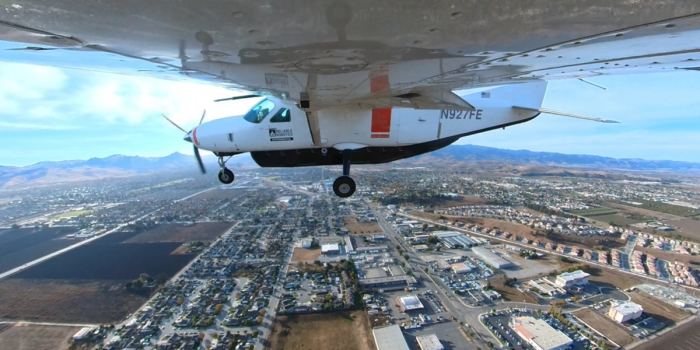In an aviation breakthrough that defies tradition, the boundless sky witnessed a pioneering moment as a cargo plane, guided solely by remote commands, completed a 12-minute journey without a single soul on board.
Reliable Robotics, the architect behind this landmark achievement, showcased the potential of autonomous flight technology, transforming a Cessna Caravan into a symbol of innovation soaring above Northern California’s Hollister Airport. With a rich history of 3,000 Caravans produced, it stands as the workhorse of the aviation industry, chosen for its versatility in flight training, tourism, and regional cargo missions.
The ambitious 50-mile journey took place in November, capturing the essence of a future where the sky’s the limit for autonomous flights. Robert Rose, the CEO of Reliable Robotics, emphasized the significance of the Caravan’s popularity but underscored its operational challenges, especially in lower altitudes and adverse weather conditions. Automation, as Rose asserted, emerges as the beacon of safety, aiming to revolutionize these operational complexities.

The heart of this groundbreaking feat lies in the hands of a remote operator—a certified pilot equipped to navigate the aircraft just as if seated in the cockpit. Operating from afar, this virtual aviator communicates with the aircraft via encrypted satellite signals, a far cry from the joystick-controlled, real-time visuals often associated with drone piloting.
Rose dispelled any notion of this being a mere video game, likening the interface to that of air traffic controllers. The autonomous system seamlessly manages all aspects of flight, from taxiing to takeoff and landing, presenting itself as an indistinguishable counterpart to conventionally piloted aircraft.
Beyond the exhilaration of unpiloted flight, safety takes center stage in this paradigm shift. Rose highlighted the immediate advantage of remote communication in emergencies. Every command sent to the plane includes detailed landing instructions, ensuring a defined response even if communication is severed—an improvement over the ambiguity that can surround in-flight emergencies today.
As Reliable Robotics collaborates with the Federal Aviation Administration (FAA) to certify this groundbreaking technology for commercial use, the implications stretch beyond cargo planes. Tests on larger aircraft, such as the KC-135 Stratotanker with the US Air Force, hint at a future where jet cargo aircraft may join the autonomous revolution within the next decade.

This victory in autonomous aviation marks a technological triumph and opens dialogues on safety enhancement and addressing the ongoing pilot shortage. The prospect of remote piloting stands as a beacon for smaller aircraft operations and a catalyst for streamlining airline efficiency, potentially reshaping the very landscape of air travel.
However, experts, including Gary Crichlow from AviationValues, caution that transitioning from crewed to uncrewed operations involves economic and political challenges beyond technological hurdles. As the aviation industry navigates this uncharted territory, the journey from sky-bound dreams to widespread adoption of autonomous flight promises to be as riveting as the flight itself.


